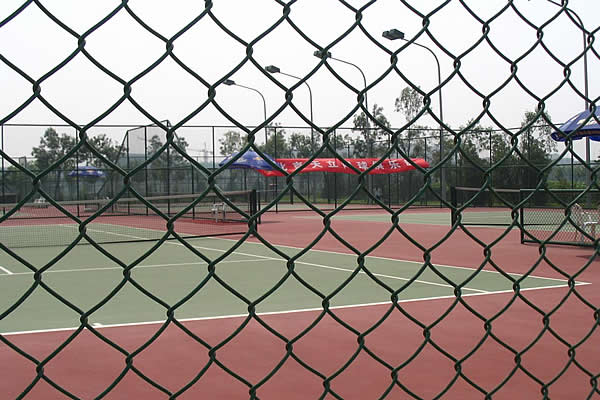Understanding the Galvanised Barbed Wire Price An In-Depth Analysis
Galvanised barbed wire, a staple in agricultural and security applications, is a type of steel wire characterised by sharp edges and points, providing an effective deterrent against intrusion or animal encroachment. The price of this essential material is influenced by several factors that are crucial to consider for buyers in various industries.
Firstly, the raw materials play a significant role in determining the galvanised barbed wire price. Steel, the primary component, is a commodity whose global market price fluctuates due to supply and demand dynamics, mining operations, and geopolitical events. When steel prices rise, so does the cost of manufacturing barbed wire. Additionally, the zinc used for galvanisation, which protects the wire from rust and corrosion, also experiences price fluctuations in the metal market.
Manufacturing processes also impact the pricing. The galvanising process, which involves coating the wire with a layer of zinc, adds to the overall cost. More advanced production methods, such as hot-dip galvanising, offering better durability, generally command a higher price than electro-galvanising.
The complexity and quality of the barbed wire design can also affect the price. Different wire gauges, barb patterns, and lengths contribute to variations in pricing. Thicker wires and more frequent barbs increase strength and effectiveness but also lead to a higher price tag Thicker wires and more frequent barbs increase strength and effectiveness but also lead to a higher price tag

Thicker wires and more frequent barbs increase strength and effectiveness but also lead to a higher price tag Thicker wires and more frequent barbs increase strength and effectiveness but also lead to a higher price tag
 galvanised barbed wire price
galvanised barbed wire price.
Geography and logistics are other critical factors. Local taxes, import duties, and transportation costs can significantly influence the final price of galvanised barbed wire. In regions with high labour costs, manufacturers might charge more to cover their expenses. On the other hand, suppliers located closer to the end-users can offer more competitive prices due to reduced shipping costs.
Lastly, market demand and supply dynamics significantly affect the price. During peak seasons, such as harvest times or heightened security concerns, the demand for barbed wire may surge, potentially leading to price hikes. Conversely, during off-seasons or surplus stock situations, buyers might find more affordable deals.
In conclusion, understanding the galvanised barbed wire price involves analysing a blend of economic, industrial, and logistical elements. Buyers should be aware of these factors to make informed purchasing decisions, balancing quality, durability, and cost-effectiveness. Whether it's for agricultural fencing, border security, or construction projects, knowing the factors that shape the price of galvanised barbed wire can lead to better budgeting and investment strategies.
 TEL:
+86-13102802206
TEL:
+86-13102802206
 Email:
fencenetting@china.com
Email:
fencenetting@china.com
 Language
Language
 TEL:
+86-13102802206
TEL:
+86-13102802206
 Email:
fencenetting@china.com
Email:
fencenetting@china.com
 Language
Language


 Thicker wires and more frequent barbs increase strength and effectiveness but also lead to a higher price tag Thicker wires and more frequent barbs increase strength and effectiveness but also lead to a higher price tag
Thicker wires and more frequent barbs increase strength and effectiveness but also lead to a higher price tag Thicker wires and more frequent barbs increase strength and effectiveness but also lead to a higher price tag galvanised barbed wire price.
Geography and logistics are other critical factors. Local taxes, import duties, and transportation costs can significantly influence the final price of galvanised barbed wire. In regions with high labour costs, manufacturers might charge more to cover their expenses. On the other hand, suppliers located closer to the end-users can offer more competitive prices due to reduced shipping costs.
Lastly, market demand and supply dynamics significantly affect the price. During peak seasons, such as harvest times or heightened security concerns, the demand for barbed wire may surge, potentially leading to price hikes. Conversely, during off-seasons or surplus stock situations, buyers might find more affordable deals.
In conclusion, understanding the galvanised barbed wire price involves analysing a blend of economic, industrial, and logistical elements. Buyers should be aware of these factors to make informed purchasing decisions, balancing quality, durability, and cost-effectiveness. Whether it's for agricultural fencing, border security, or construction projects, knowing the factors that shape the price of galvanised barbed wire can lead to better budgeting and investment strategies.
galvanised barbed wire price.
Geography and logistics are other critical factors. Local taxes, import duties, and transportation costs can significantly influence the final price of galvanised barbed wire. In regions with high labour costs, manufacturers might charge more to cover their expenses. On the other hand, suppliers located closer to the end-users can offer more competitive prices due to reduced shipping costs.
Lastly, market demand and supply dynamics significantly affect the price. During peak seasons, such as harvest times or heightened security concerns, the demand for barbed wire may surge, potentially leading to price hikes. Conversely, during off-seasons or surplus stock situations, buyers might find more affordable deals.
In conclusion, understanding the galvanised barbed wire price involves analysing a blend of economic, industrial, and logistical elements. Buyers should be aware of these factors to make informed purchasing decisions, balancing quality, durability, and cost-effectiveness. Whether it's for agricultural fencing, border security, or construction projects, knowing the factors that shape the price of galvanised barbed wire can lead to better budgeting and investment strategies.